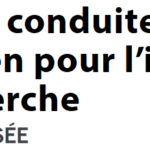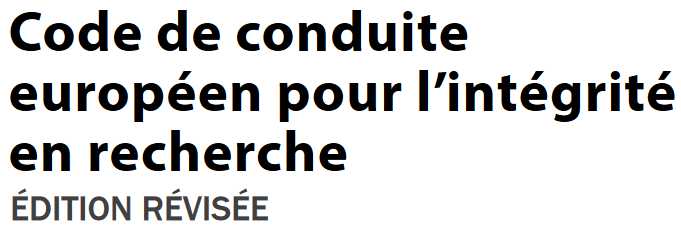Pendant l'année 2013, le JCE publie régulièrement des articles d'une page sur la rédaction des articles scientifiques. Un éditorial (avril 2013) a annoncé la série des 12 articles destinés aux jeunes chercheurs. Ils sont tous sous le même format : "background information (‘‘What you should know’’) and advice (‘‘What you should do’’), avec un petit encadré contenant les points importants. Ces articles sont en accès libre et 9 ont été publiés en novembre 2013.. Ils font partie des artciles les plus téléchargés. Félicitons cette initiaitve de JCE, une revue avec un facteur d'impact de 5,332 . Il en reste 3 à venir. Voici la série :
1 How to write a research paper "Indeed, even if a study has been appropriately conducted and technically
well presented, it may have been written in such a way that its message
will not be recognized"
2. Title and abstract "Once the abstract is completed, it helps to ask yourself four questions,
each relating to one section: “What is known and why is this study
needed?” (Background), “What did we do?” (Methods), “What did we find?”
(Results), and “What does it mean?” (Discussion)."
3. Introduction "Use present tense for established facts (e.g., “low back pain is a
common reason to consult physical therapists”) and past tense or
present perfect for findings you do not consider established (e.g., “two
treatment sessions a week proved more beneficial than one session per week in a cohort study”)."
4. Methods "After you have drafted the methods section, ask yourself, “Would a
researcher be able to reproduce our study with the information I provide
in this paper?”
5. Results "Structure
roughly into: recruitment/response, sample characteristics, primary
analyses, secondary analyses, and ancillary analyses. Match the results section with the methods section.
Present findings without interpretation."
6. Discussion "A typical discussion section consists of: main findings, comparison of
findings with those reported in the literature, strengths and
limitations, and implications for clinical practice and/or research."
7. Tables and figures "Make a deliberate choice early in the writing process on which data to present in tables and figures….. Put your row headings into a meaningful order from top to bottom and indent subheadings for categories within a variable."
8. References ayez un logiciel pour gérer vos articles et sachez choisir les références "Consider choosing the reference which (1) provides the highest level of
evidence, (2) is open-access available, (3) has been most recently
published, or (4) has been published in the journal to which you are
submitting your manuscript."
9. Authorship : décider quels seront les auteurs le plus tôt possible et sachez travailler avec les co-auteurs !
10. Choice of journal
11. Submitting a paper
12. Responding to reviewers


